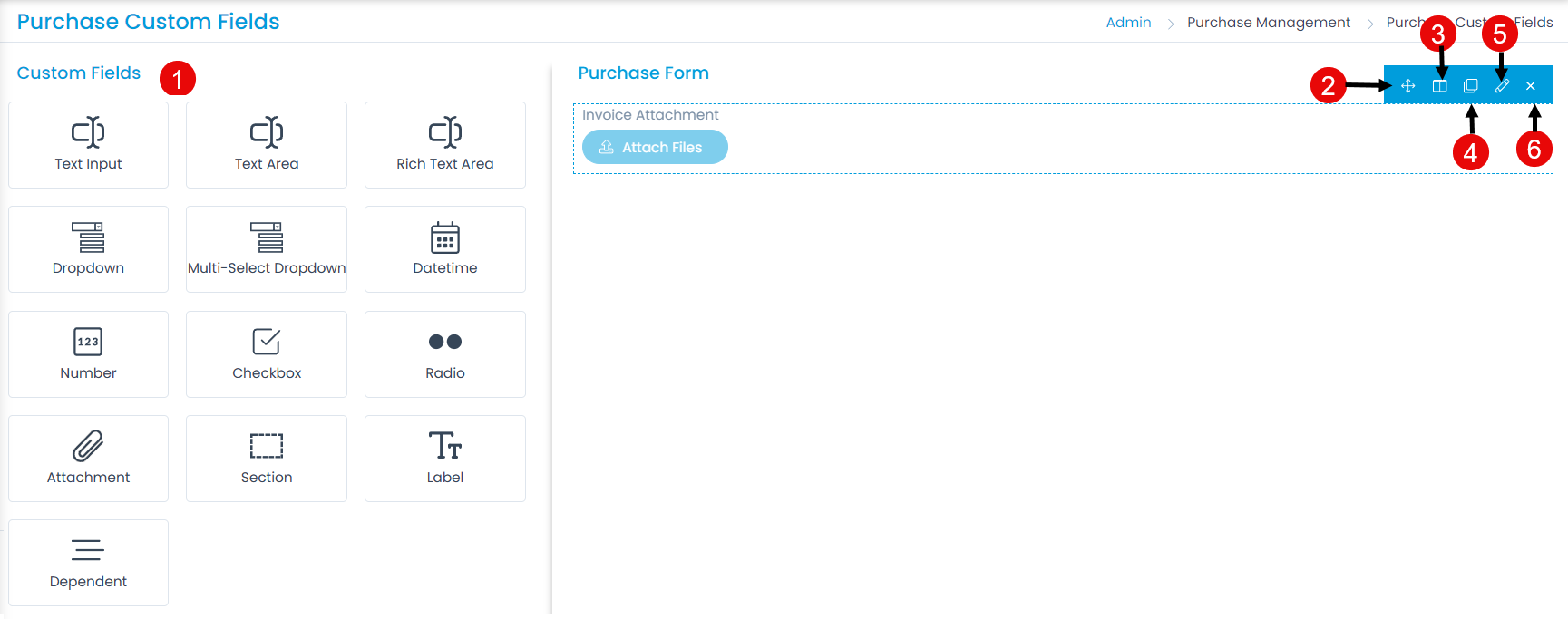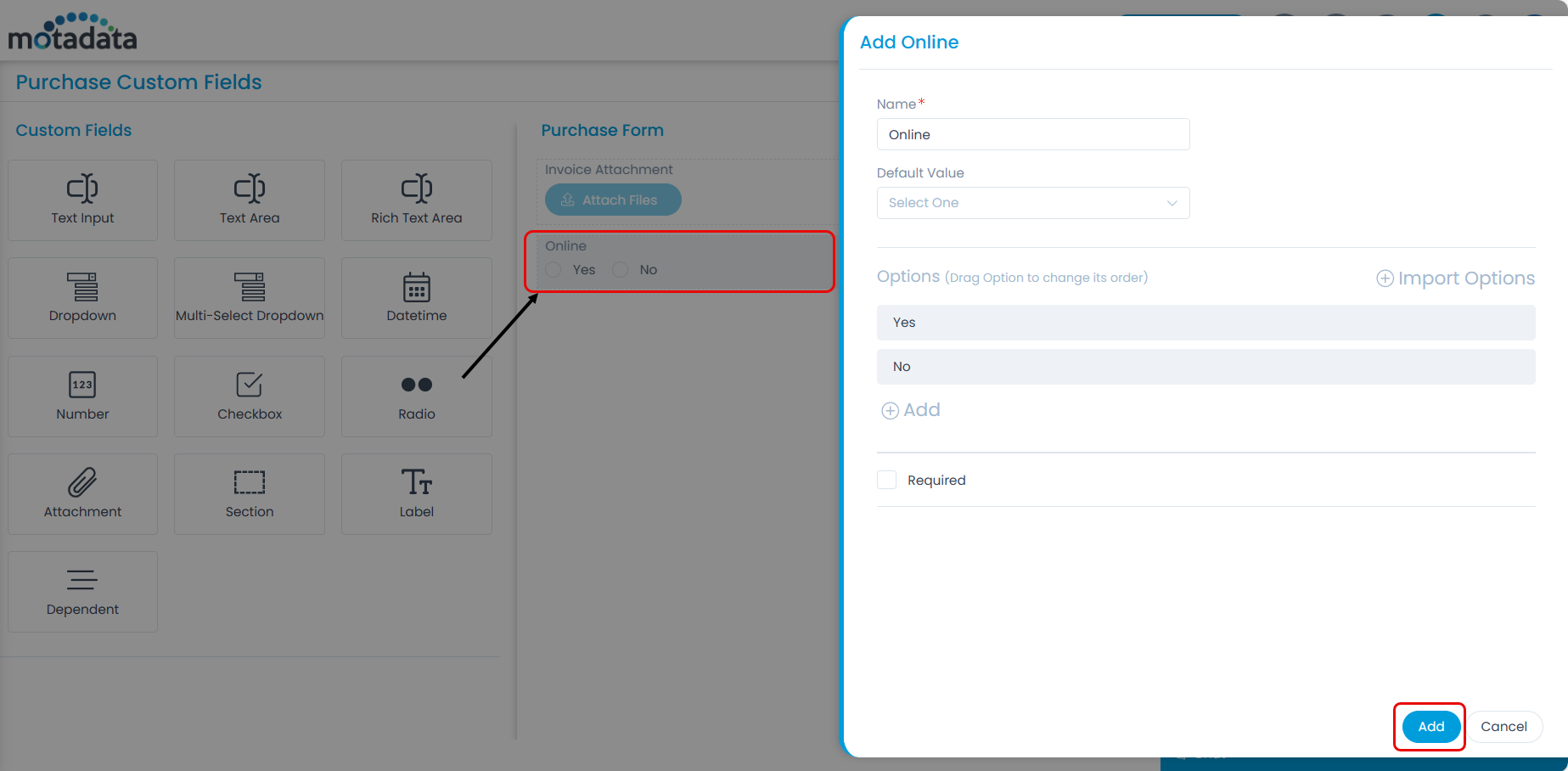Purchase Custom Fields
The layout of asset management has all the fields required to manage the purchases of an organization. However, to meet the organization’s needs, you can modify the default template and add new fields. The fields can later be used in the automation settings also.
To view the Purchase Form, navigate to Admin > Purchase Management > Purchase Custom Fields and the below page appears.

The page displays two types of fields:
- Default Fields: These are the primary fields that come with the fresh installation. The field names can neither be changed nor deleted.
- Custom Fields: These are the additional fields added from the pallet. The fields can be renamed and deleted.
Here, you can customize the form using the below options:
- Field Pallet: You can drag and drop the fields from the pallet to add into the form.
- Re-Order: You can drag and drop the fields to change the order of the form.
- Expand/Collapse: You can expand and collapse the fields to show 1 in a row or 2 in a row. If collapsed, the width of the field will get reduced to half.
- Duplicate: You can create duplicate fields from the custom fields.
- Edit: You can edit the fields, make them mandatory, or change their characteristics.
- Remove: You can delete the custom fields.
Deleting the custom field will remove it and its data from all the related requests. Also, the Workflows, Scenarios, SLAs, and other components containing these custom fields might be affected. Kindly review the impact before proceeding with the removal.
Example Scenario: For example, every purchase in an organization requires a version for newer purchase follow-up date. This is the version by which a purchase Manager and other Teams can identify the purchased updated version of the upcoming purchase.
Radio
To add the Radio custom field, drag and drop it on the form in the right-hand side, and a popup appears.

Enter the following details:
- Name: Enter the name of the field.
- Default Value: Enter the default value of the field.
- Options: Add the options for the field. You can also import multiple options using the Import Options link.
- Required: Enable to make the field mandatory.
Once done, click Add. You can then re-arrange its location, create a duplicate field, expand/collapse its width, edit, or delete it if required. Similarly, you can add other custom fields. For more details, refer to the link Request Form.